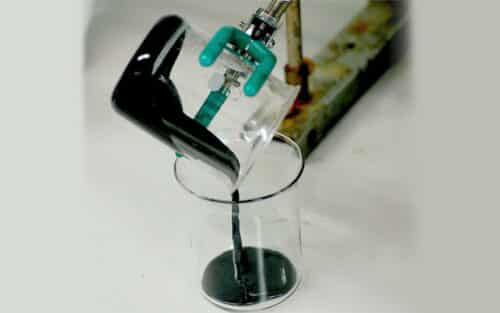Electrically conductive polymers, such as polyaniline, hold many fragile components together in medical devices, automobiles, and many other advanced technology. For decades, the synthesis of polyaniline for industrial electronics applications has been hampered by a significant problem: which solvent is optimal for synthesis?

Researchers from the University of Tsukuba and collaborators produced polyaniline in a variety of common solvents, according to a study recently published in Polymer-Plastics Technology and Materials. “Polyaniline is an extremely versatile polymer in routine and advanced technologies, but restrictions on which solvents can be used for synthesis have long hindered this versatility,” explains Professor Hiromasa Goto, senior author. “Our discovery of how to facilitate polymerization in diverse solvents will be useful in basic research and industrial applications.”
When they added a modest amount of iodine to the reaction mixture, the researchers were able to make polyaniline from aniline sulphate in a single step. This technique worked with a variety of solvents, including harmless ethanol and dichloromethane. Extensive experimental characterizations revealed that the polyaniline produced using this method has the same crystallinity and electrical characteristics as polyaniline made using traditional methods.
“A particularly exciting result is the ease of preparing industrially useful polymer alloys, such as blends with polystyrene or cellulose derivatives,” says Professor Goto. “Electrically conductive paint, advanced rubber blends, and other materials are now straightforward to prepare, which we expect will facilitate product development in diverse fields.”
What is it about the extra iodine that makes polyaniline manufacturing so much easier? Iodine, according to the researchers, is an electron-acceptor dopant that aids in the creation of localised polarons, which is necessary for radical chain reactions to polymerize. The findings of this research will aid in making polyaniline more compatible with inkjet printing and other useful processing technologies, simplifying the fabrication of printed circuit boards and other common electronic components. Many common and sophisticated technologies will be easier to create at a lower cost by focusing on the fairly abstract problem of solvent compatibility.
Click here to access the study.








